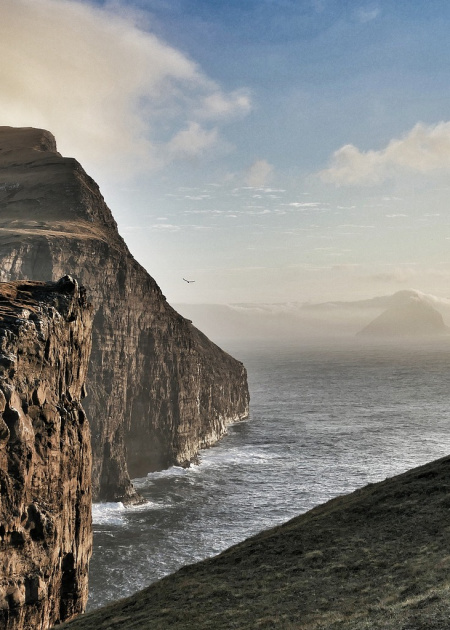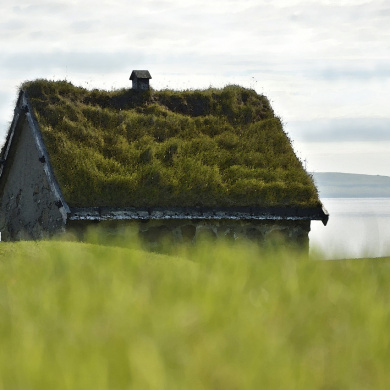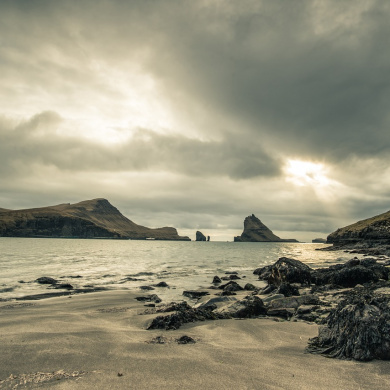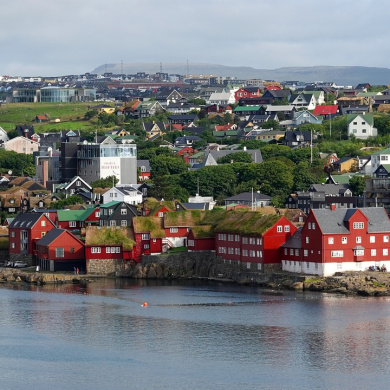Why travel to
The Faroe Islands are an incredibly picturesque destination, featuring some of the wildest and most remote landscapes in Europe. From the rolling hills, to the dramatic cliffs that overlook the sea, the Faroe Islands offer a unique natural beauty that will take even the most experienced travelers breath away. The islands are also renowned for their friendly locals, incredible seafood, and unpolluted nature - making it a perfect location for adventurers looking for unspoiled beauty and a truly authentic experience.
Cost of living
The cost of living in the Faroe Islands is generally considered to be high compared to other parts of Europe. The costs of housing, utilities and food are all higher than the European average. Additionally, the cost of living is further increased by the fact that many goods must be imported from abroad.
Safety
Yes, it is generally safe to travel to the Faroe Islands. The crime rate is low, and the country has implemented comprehensive protective measures against COVID-19. However, it is always advisable to take precautionary measures, such as avoiding contact with large crowds and washing hands frequently.
Places to visit
- Tórshavn: Tórshavn is the capital of the Faroe Islands, located in the southern part of the country. This vibrant city is filled with excellent restaurants, shops, and attractions. Among these attractions is the Tinganes peninsula, an old trading post where you can still see the turf-roofed buildings from the past.
- Gásadalur: Gásadalur is a small village located in the Faroe Islands, located on the island of Vágar. It’s known for its breathtaking views of the surrounding mountains and landscapes and its dramatic waterfalls. It’s also the only place in the Faroe Islands to experience the “total silence” while taking in the tranquil scenery.
- Mykines: Mykines is located off the west coast of the Faroe Islands, connected by a bridge to the island of Vágar. It’s known for its beautiful natural scenery, white sand beaches, and diverse wildlife, including puffins, razorbills, and gannets.
- Sørvágsvatn: Sørvágsvatn is the largest lake in the Faroe Islands, located on the island of Vágar. It’s a unique natural landmark and popular tourist destination, with great views of nearby mountains and beautiful views of the ocean to the east.
- Kirkjubøur: Kirkjubøur is a village in the Faroe Islands, located on the island of Streymoy. This village is home to a number of old wooden buildings and churches, which are thought to date back to the 11th century. It’s a great place to explore the local history and culture.
Food to try
- Skerpikjøt: Skerpikjøt is an old Faroese delicacy that is made by wind-drying cubes of mutton meat. The meat is usually prepared with a touch of sugar and salt to give it a sweet and salty flavour.
- Ræstur Fiskur: This traditional Faroese dish consists of fermented fish and potatoes, seasoned with herbs and spices. It's often served with boiled potatoes and Faroese flatKjøt, a traditional Faroese snack.
- Kjøt: Kjøt is a type of Faroese sausage made from pork, beef, and mutton. It's usually served with boiled potatoes, a boiled egg, and a tomato-vinegar sauce.
- Hangikjøt: As the name suggests, Hangikjøt is smoked mutton. The meat is steeped in Faroese Juniper for hours and then smoked for days to give it a unique flavour, unlike any other meat.
- Rakfisk: Rakfisk is a traditional Faroese dish made of freshly caught trout. It is prepared by salting the fish and fermenting it for several months, giving it a strong taste and a crunchy texture.
Souvenirs
- Viking bones – Authentic replicas of Viking remains to commemorate Faroe's rich Viking heritage.
- Shetland wool knitwear – Chunky, traditional knitwear that has been made in the Shetlands since the 17th century.
- Faroese whaling flags – Bright, colorful flags that tell the story of the island's whaling industry.
- Cod leather mittens – Thick, warm mittens made from the leather of cod with intricate Faroese embroidery.
- Faroese cut-work linen – Delicate linen items with beautiful Faroese cut-work patterns.
- Shetland lamb side – Traditional Faroese dishes made of lamb from the Shetland Sheep, served with onions, potatoes, and root vegetables.
- Føroyar bakelite holders – A traditional Faroese product made of shoe soles and other materials to store items or burn candles.
- Faroese greeting cards – Cards featuring traditional Faroese imagery, such as fishermen, lighthouses, and birds.
- Drasil figurines – Hand-crafted, wooden figurines of the archipelago's mythical Drasils, symbols of Faroese folklore.
- Pearl jewellery – Authentic, handmade jewelry that incorporates the natural beauty of Faroe Islands' pearls.




